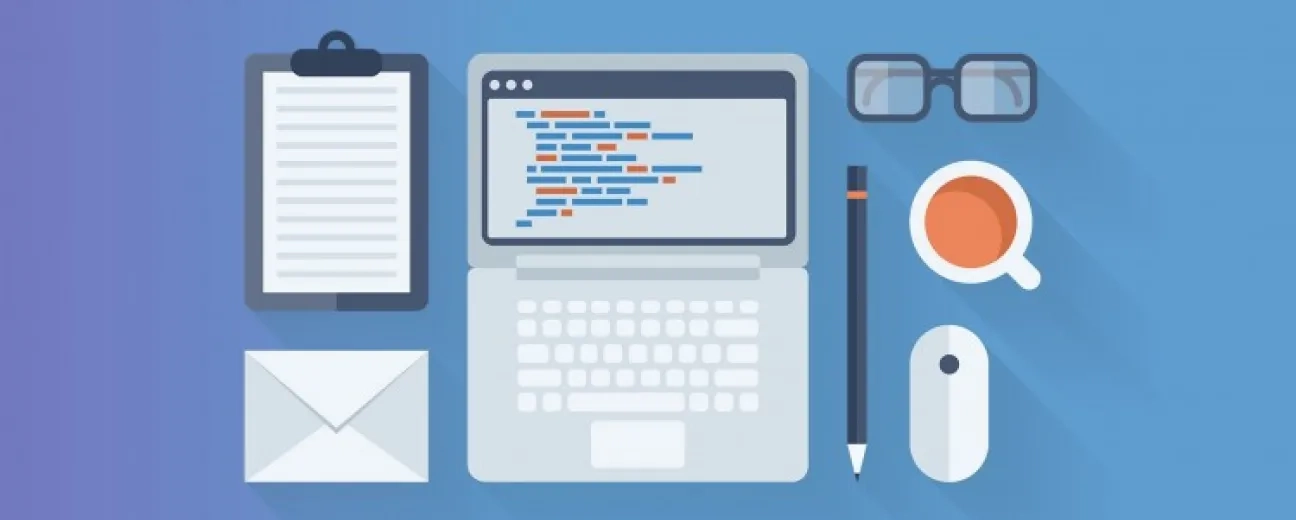
We’re excited to hear your project.
Let’s collaborate!

Working as a developer you might sometimes find yourself in a situation where you’re dissatisfied with your work but you simply can’t figure out why. Even if you research and read design theory books, it’s very though to create seamless design work at the snap of a finger. Luckily enough, there are ways to improve your work with very little effort. Here are 8 tips on creating great design.
Thin fonts are all the rage in 2016 but they are risky to use simply because they can cause eye strain. Eye strain occurs when users have a hard time reading text or they must focus more in order to be able to read it. This can quickly exhaust anyone and force them to exit your website. Thin fonts are usually quite hard to read, especially on certain backgrounds, so it’s a good idea to make changes whenever necessary. The optimal font weight is around 400 as this will create the least amount of eye strain – try to be more receptive when you get feedback regarding the readability of your text and fonts, it will pay off in the long run.
When entering a website, the first thing a user does is to quickly scan all the content and search for information regarding their problem. If they can’t find a solution to their problem, they’ll most likely bounce. When designing a page, any page…you need to keep the user’s needs in mind. Let’s say you are designing a services page – your visitors need to be able to find the “next” button or a contact button fairly quickly or else they will just leave. Contrast is an excellent way to help your visitors discover all nooks and crannies of your website. Using rich and vibrant colours for links and buttons is highly recommended.
Let’s start off by saying Font Awesome really is awesome. Make use of icons whenever and wherever appropriate – your visitors will thank you for it. We live in a world ruled by signs – red is danger, green is safe and blue is comforting. Use it to your advantage! Spare your visitors the effort of reading every little bit of text on your website by simply adding an icon next to it – it will help clarify your text and make it a bit more user friendly.
When writing content for your website or pages, it can get pretty confusing. Your average user will spend less than 10 seconds on a website to try and find the information they need before they search for another one. It’s a good idea to always have simple ~5 word headers over any block of text. This will help your user know if the information is of any value to him or her – time’s expensive!
If you want someone to click on a link or button, you’d better make it obvious that it’s clickable! Menu items, buttons and links are common clickable items on a website. That being said, make sure that your buttons have a high colour contrast compared to the rest of the page and that your menu items have an icon next to them. You can also play around in CSS to change their colour when the user hovers over them. Links should always be in blue – having some call to action text next to the link can also help.
Colours should bring order and clarity to your website. You should never use too many similar colours as this can cause eye strain for your user. Colours can also clash with each other, making the user’s brain work harder to figure out what is what. Colour balance needs to be attained through careful and patient testing!
Every piece of content on your website should have the same layout and approximately the same size. Your information’s colour, format and proximity to other links or related pieces of information should be consistent throughout the whole website. Different portions of content that are different but fill the same role should also be consistent. For example, if you offer a basic, medium and premium offer all information regarding these offers should have the same size and the same font. You can get creative, but keep it consistent!
If you want your user to feast on all the information provided on your website, you should make each and every piece of information as digestible as possible. Alignment can help you do that easily. Alignment should be where the user’s eye begins – either left or centre-aligned.
When coding, you can make mistakes and you’ll get error messages. But with design, mistakes or errors can be difficult to spot. Think about these tips when building up your project or go through them when you’re in a pickle and soon enough these principles will be imbedded in your workflow!

We’re excited to hear your project.
Let’s collaborate!